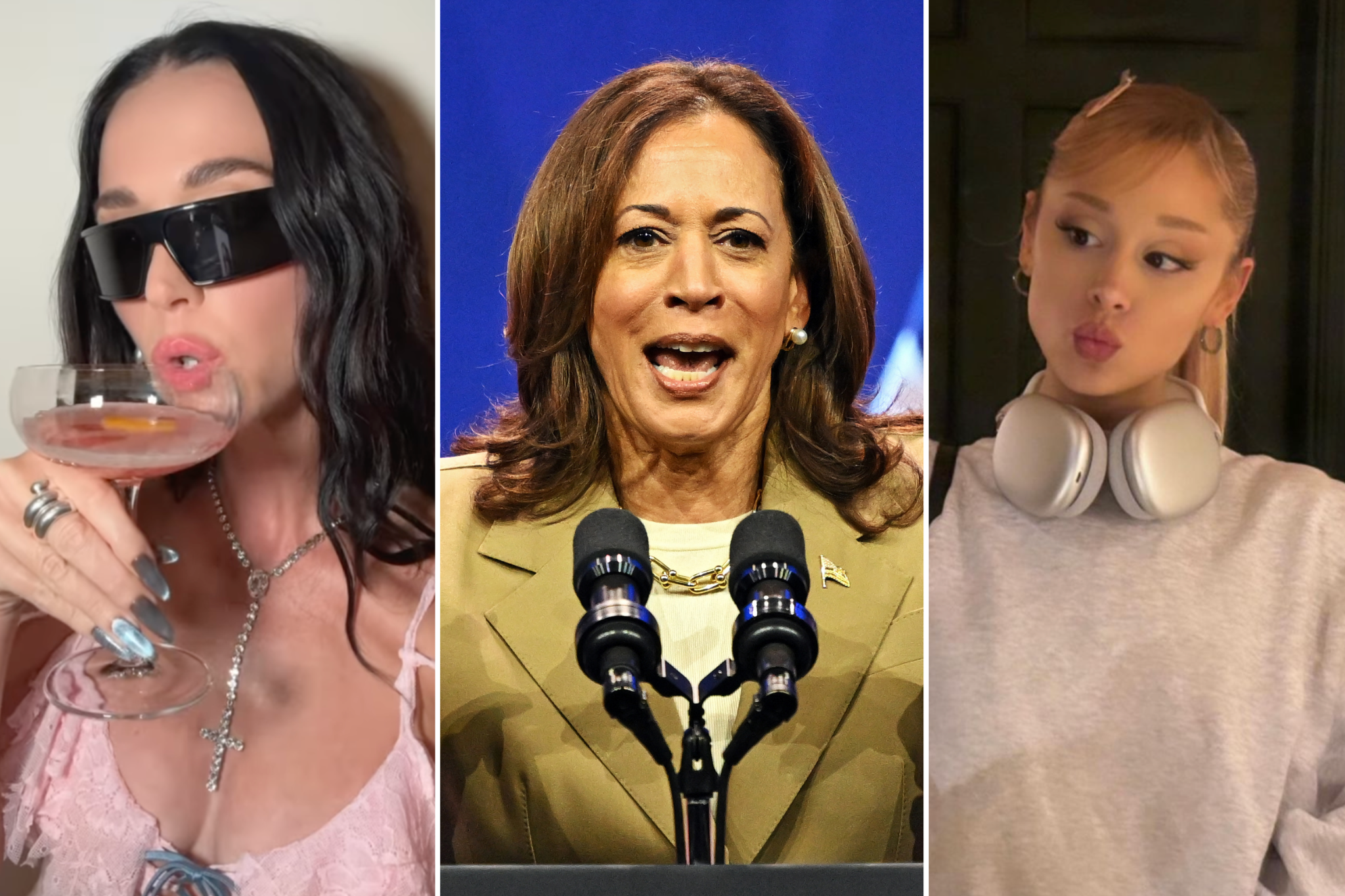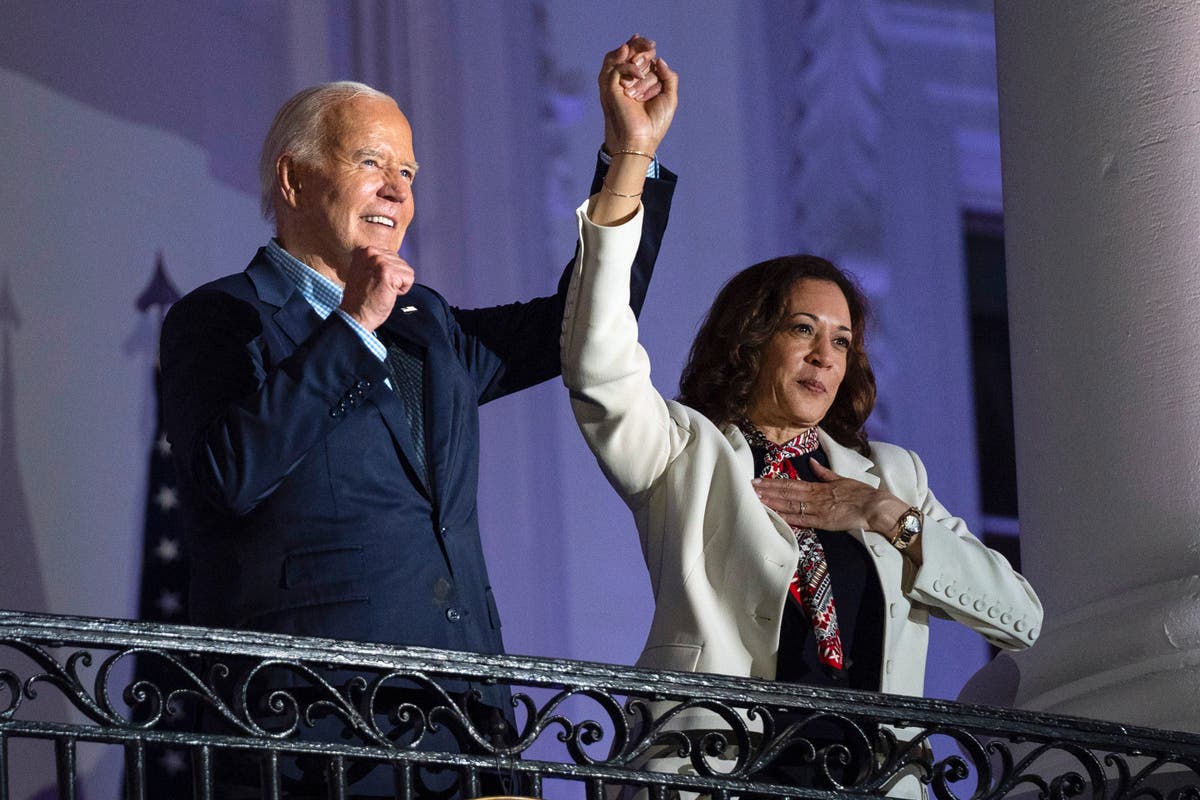Vice President Kamala Harris has now been endorsed by President Joe Biden, making it all but guaranteed that she’ll feature on top of the Democratic party ticket and take on Donald Trump in November’s election.
But how would Harris actually fare against Trump?
A recent New York Times/Siena poll, on July 12, showed that Trump just scraped ahead of Biden in national polls, and could win in November.
But when matched up against Harris, the same poll showed the vice president leading Trump by a margin of one point.
The poll, taken before Biden dropped out of the race and before Harris announced she would run, found that Harris performed better against Trump than Biden across all age groups – except for over-65s, who flip towards Trump when Harris is on the ticket.
Young voters in particular were shown to be strong backers of Harris, with the polls showing her taking a 16-point lead over Trump among voters under 30.
A Democratic PAC advertising campaign titled “Kamala Harris for America” is now being launched to target young voters in Michigan, Pennsylvania and Wisconsin after Biden’s announcement.
The “Kamala Harris for America” ad highlights key issues for young voters, such as climate change and abortion rights.
College-educated white voters are slightly more inclined towards Harris than Biden, with both polled to beat Trump by 24 points and 22 points respectively.

However, the possibility of a Kamala Harris candidacy is unpopular among Trump’s key support base — white Americans with no college education — and appears to drive more voters in this group towards the right (+38) than a Biden candidacy (+36).
By all counts, Harris draws in more support from ethnic minority voters, with a 64-point lead against Trump among Black voters, and a 16-point lead among other ethnic groups.
Women are also more likely to vote blue with Harris on the ticket, giving a 17-point lead. Female voters were already more likely to vote against Trump, with Biden having a 14-point lead with this section of the electorate at the time.
Trump was leading in seven swing states ahead of Biden, according to the latest Emerson College Polls on July 16. But Harris could come close to overtaking Trump’s lead in the key swing state of Pennsylvania, with Harris at 47 per cent and Trump at 48 per cent, according to a separate New York Times poll on July 12.
Though Biden won his home state by 1.17 per cent in 2020, he has since lost his lead, and was trailing behind Trump by 3 per cent.
Meanwhile in Virginia, replacing Biden with Harris would strengthen the Democrat lead, from a 3 per cent to 5 per cent margin.
All swing states appear to have an appetite for a new Democratic candidate, as revealed by an Emerson College Poll on July 17th.
When polled against an undefined “younger Democrat who is qualified for the job”, Trump lost in seven key swing states.
Michigan and Georgia voters in particular gave a 10-point lead for this possible alternative candidate.
Yet separate polls reveal that none of the rumored possible Democratic candidates — Gavin Newsom, Kamala Harris, or Gretchen Whitmer — had a particularly strong performance when polled against Trump.
A July 12 poll from PBS News shows that California governor Gavin Newsom could secure 50 per cent of support from American voters, on par with both Biden and Harris. Newsom has publicly backed Harris in a post on Twitter/X.
Michigan governor Gretchen Whitmer performed the least strongly out of the three, though still matched Trump at 49 per cent of the vote each.
Whitmer has not yet endorsed a Harris candidacy, but said in a statement that she will do “everything I can to elect Democrats and stop Donald Trump”.
While no Democratic candidate has yet shown a substantial lead over Trump, it may be that the air of uncertainty has left Democratic voters in split minds. It’s also important to consider that Harris will make a running mate pick that may affect polling in unforeseen ways.

